Fine Arts Guide for Beginners Made Simple
“Art enables us to find ourselves and lose ourselves at the same time.” — Thomas Merton
by Collectors Abode | Updated May 06, 2025
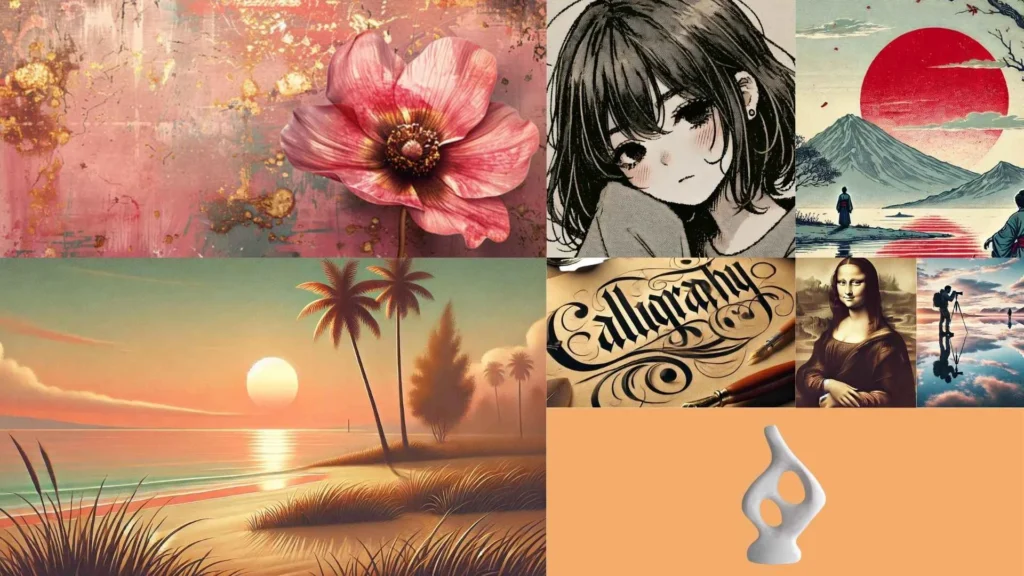
We, the Collectors Abode Team, independently review everything we recommend. If you buy anything through our links,
we may earn a commission. Learn more ›
Fine Arts guide here! Let’s talk about all the beautiful, exciting ways people express themselves through art. Think of colorful paintings, cool digital designs, beautiful handwriting (yep, that’s calligraphy), and even photos that tell a story. Fine Arts isn’t just for museums — it’s for everyone who loves color, design, and creativity in everyday life.
Fine Arts can show how we feel, what we believe, and how we see the world. A simple drawing or a detailed sculpture can say so much. Even one piece of art can make us stop and feel something powerful. That’s the magic of it.
In this Fine Arts guide, we’ll keep it simple and fun. You’ll get to know more about painting, drawing, digital art, sculpture, prints, photography, and calligraphy. Each one has something special to offer. You might even find a new hobby or feel inspired to try something new.
By the end, you’ll have a better idea of what Fine Arts is all about. You’ll also get easy tips, fun ideas, and a peek into what’s trending right now in the art world. This guide is here to help you enjoy and understand art — no fancy words needed.
What is Fine Arts?
When we talk about Fine Arts, we’re referring to the creative disciplines, primarily visual— painting, sculpture, drawing, and photography. However, Fine Arts also include art forms that appeal to our senses and emotions, such as music, dance, and theater.
A Fine Arts Guide will show you that these art forms are not just about creating something beautiful but also about expressing ideas, emotions, and stories that connect us all.
The journey of Fine Arts is as old as civilization itself. From the earliest cave paintings etched by our ancestors to the grand masterpieces created during the Renaissance, Fine Arts have grown and transformed with human society. Fine Arts hold a special place in both our culture and our personal lives.
Culturally, they reflect societies’ values, beliefs, and experiences throughout history. On an individual level, engaging with Fine Arts—creating or simply appreciating them—allows us to explore our emotions, gain new perspectives, and connect meaningfully with others.
Types of Fine Arts
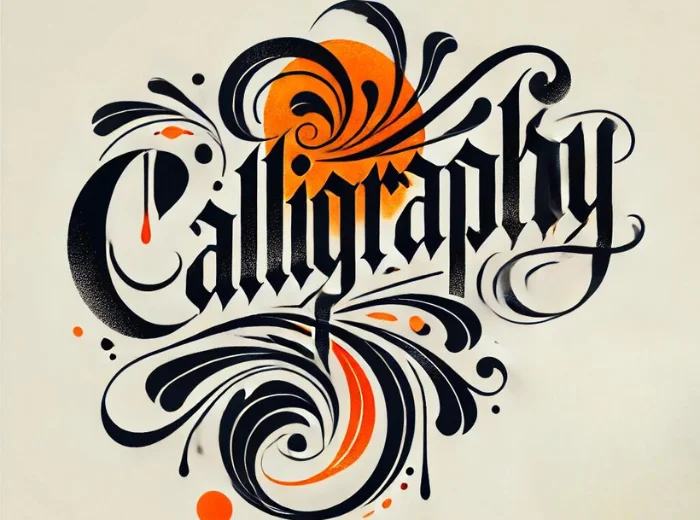
Calligraphy, known as the art of elegant writing, boasts a deep history that crosses centuries and various cultures. From ancient scripts used in religious texts to elegant hand-lettering in modern design, calligraphy has always been about more than words—it’s about expression and artistry.
Some popular styles include Copperplate, known for its elegant, flowing strokes; Gothic, with its bold and angular forms; and Italic, celebrated for its readability and graceful curves. Modern calligraphy continues to thrive, blending traditional techniques with contemporary styles, from wedding invitations to digital fonts.
2. Digital Art
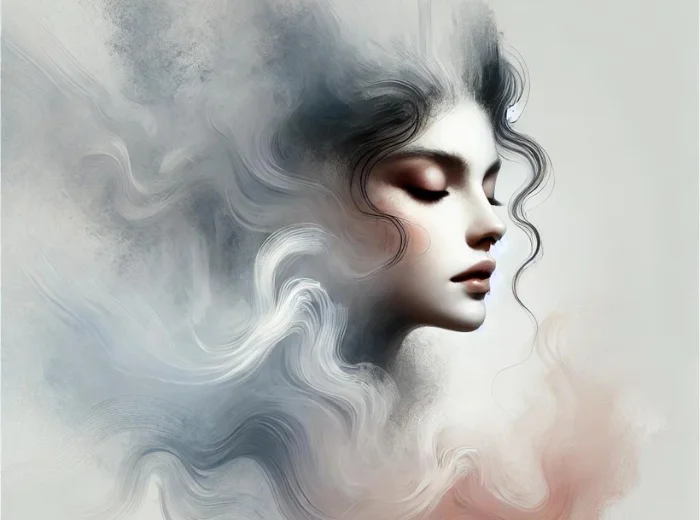
Digital art is a relatively new frontier in the world of Fine Arts. Yet, it has quickly established itself as a powerful medium for creativity. The rise of digital art began with the advent of computers and graphic design software. Still, it has since expanded into a vibrant and diverse field.
Digital artists use various tools, such as Procreate, Adobe Photoshop, Illustrator, Blender, Corel Painter, and Clip Studio Paint, to create stunning works ranging from photorealistic images to abstract compositions. These tools offer endless possibilities for creativity, allowing artists to manipulate colors, textures, and forms in previously unimaginable ways.

Drawing has always been a foundational element talked about in the Fine Arts Guide, a preparatory step for other art forms, and a standalone expression of creativity. Drawing plays a crucial role in Fine Arts—it’s where ideas begin, often as simple sketches that develop into intricate works of art.
Artists employ a variety of styles in their drawings, from realistic renderings that capture life with precision to abstract works that explore form and color without representing the physical world. Other popular styles include line drawing, emphasizing simplicity and clarity, and surrealism, where the impossible becomes possible. The materials used range from traditional pencils and charcoal to ink, pastels, and digital tablets.
4. Painting

Painting is the most iconic of all Fine Arts, with a history that stretches back thousands of years. As an art form, painting encompasses various techniques and mediums, each bringing its unique texture and depth to the canvas.
Artists might work with oil paints for their rich, luminous qualities, acrylics for their versatility and quick drying time, or watercolors for their delicate, translucent effects. Other mediums like gouache and encaustic (wax-based) also offer unique characteristics, allowing diverse artistic expression. Each medium requires different skills and approaches, making painting a dynamic and ever-evolving art form.
5. Photography
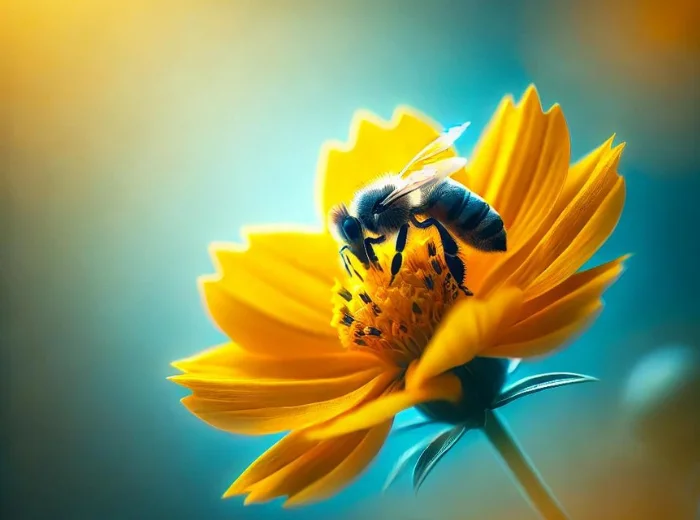
Photography, a relatively young art form compared to others, has quickly become one of the most accessible and popular forms of Fine Arts. Unlike traditional media, photography captures moments in time, allowing us to see the world through the artist’s lens.
Different photography styles bring various aspects of the subject to life—landscape photography captures the grandeur of nature, portrait photography reveals the depth of human expression, and street photography documents the raw energy of urban life. Other styles, like macro photography, which focuses on extreme close-ups, and black-and-white photography, which highlights contrast and composition, further expand the artistic possibilities.
6. Prints
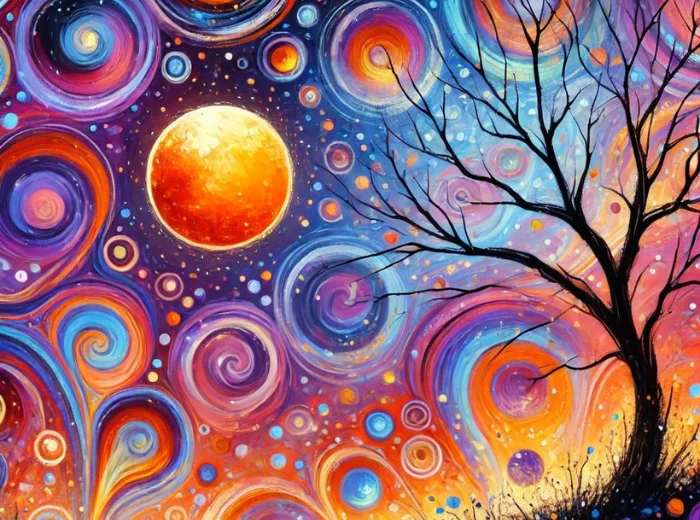
The art of printmaking involves creating images on paper or other materials through techniques that allow for multiple reproductions of the same artwork. This process has significantly made Fine Arts more accessible to a broader audience. There are various types of prints, each with its value and appeal.
Limited edition prints are prized for their exclusivity, as only a certain number are produced, often signed and numbered by the artist. Vintage prints hold historical value, offering a glimpse into the past through the artistic styles of previous generations. Printmaking involves etching, lithography, and screen printing, each adding distinctive texture and character to the finished image.
7. Sculpture

Sculpture is the craft of molding materials into three-dimensional creations, offering a hands-on experience that sets it apart from other art forms. Sculptors work with various materials, from traditional stone and bronze to modern materials like steel, glass, and plastic. Each material presents challenges and possibilities, allowing artists to explore form, space, and texture in diverse ways.
Different styles and techniques in sculpture include carving, where the material is removed to reveal the form; modeling, where the material is added and shaped; and assemblage, where different materials are combined to create a new whole. Sculptures can range from highly realistic to abstract, with each piece uniquely expressing the artist’s vision.
Fine Arts Resources and Learning Guide
If you’re looking to deepen your knowledge and skills in Fine Arts, this Fine Arts Guide is a great starting point. Whether you want to dive deeper into specific techniques or explore the history and evolution of art, plenty of resources are available to help you on your journey.
From the best art books for beginners to online art communities, here’s how to take your passion for Fine Arts to the next level.
Books on Fine Arts
For those looking to enrich their understanding of Fine Arts, there’s a wealth of art history books and online art courses that can deepen your appreciation and skill set. Here are some top recommendations:
- “The Story of Art” by E.H. Gombrich: This is a comprehensive art history book perfect for beginners and enthusiasts who want to understand the evolution of art.
- “Ways of Seeing” by John Berger: This is a must-read for anyone interested in how we perceive and interpret art, which offers unique insights.
- “Drawing on the Right Side of the Brain” by Betty Edwards: This book is ideal for those wanting to learn to draw. It breaks down the basics in an accessible way.
- “The Art Spirit” by Robert Henri: This inspiring collection of essays explores the philosophy and practice of creating art, making it a favorite among artists.
- “The Elements of Color” by Johannes Itten: A fundamental book on color theory, essential for anyone looking to master the use of color in their artwork.
Fine Arts Courses
- Coursera—“Modern and Contemporary Art and Design”: Offered by MoMA, this online art course explores modern art movements and contemporary design, perfect for those looking to broaden their understanding of the art world.
- Skillshare—“The Art & Science of Drawing”: This course is a great starting point for beginners, focusing on foundational drawing skills.
- Udemy—”Complete Drawing and Painting Course”: This course covers various techniques in drawing and painting, providing a more comprehensive approach.
- Domestika—”Introduction to Digital Painting”: This course is perfect for those interested in digital art. It guides you through the basics of digital painting.
Museums and Galleries for Fine Arts
Immerse yourself in Fine Arts by visiting or exploring virtual art museums and famous art galleries that showcase some of the world’s most incredible artworks:
- The Louvre (Paris, France): One of the most famous art museums in the world, the Louvre is home to iconic masterpieces like the Mona Lisa.
- The Metropolitan Museum of Art (New York, USA): This museum offers an extensive collection spanning thousands of years, making it a must-visit for any art lover.
- The Tate Modern (London, UK): This museum focuses on modern and contemporary art and showcases works by renowned artists such as Picasso and Warhol.
- The Uffizi Gallery (Florence, Italy): A treasure trove of Renaissance art, including works by Michelangelo and Botticelli.
- The Prado Museum (Madrid, Spain): This museum is known for its rich collection of European art, including masterpieces by Velázquez and Goya.
Online Communities for Fine Arts
Engage with fellow art enthusiasts and share your love for Fine Arts in these lively online communities and forums:
- DeviantArt: One of the most famous art forums, DeviantArt allows artists to share their work, get feedback, and connect with a global community.
- Reddit – r/Art: A thriving online art community where users can post and discuss various art forms from all genres.
- WetCanvas: A dedicated space for visual artists to share their work, participate in forums, and access valuable tutorials.
- Instagram—#FineArtsCommunity: Using this hashtag helps you connect with various artists and art enthusiasts worldwide.
- Pinterest—Fine Arts Boards: Discover and save ideas from curated boards dedicated to Fine Arts, which offer endless inspiration for your work.
Fine Arts Techniques, Styles, and Trends
Traditional vs. Modern Art
Traditional and modern art differ significantly in their approaches and techniques. Traditional art often adheres to established methods and classical forms, focusing on realism, symmetry, and historical themes. In contrast, modern art embraces innovation, experimentation, and abstract ideas, challenging conventional boundaries and often reflecting contemporary issues.
Here’s a comprehensive table to help you understand the difference between Traditional vs. Modern Art:
| Aspect | Traditional Art | Modern Art |
| Period | Predominantly before the 19th century | Late 19th century to the present |
| Techniques | Focus on classical techniques, realism, and fine details | Emphasizes experimentation, abstraction, and innovation |
| Themes | Religious, historical, and mythological themes | Contemporary issues, self-expression, and abstract ideas |
| Materials | Traditional materials like oil paints, marble, and canvas | Diverse materials, including industrial objects, digital media, and found objects |
| Styles | Realism, Baroque, Neoclassicism, Romanticism | Impressionism, Cubism, Surrealism, Abstract Expressionism |
| Approach to Form | Emphasizes realistic representation, symmetry, and proportion | Encourages distortion, abstraction, and non-traditional forms |
| Purpose | Often aimed at educating, storytelling, or glorifying subjects | Focuses on personal expression, social commentary, and breaking artistic conventions |
| Audience | Commissioned by religious institutions, royalty, or wealthy patrons | More accessible to the public, often challenging the status quo |
| Influence | Heavily influenced by religious and classical traditions | Influenced by industrialization, technology, and cultural shifts |
| Exhibitions | Displayed in traditional settings like churches, palaces, and museums | Often found in galleries, public spaces, and online platforms |
| Notable Artists | Leonardo da Vinci, Michelangelo, Rembrandt | Pablo Picasso, Jackson Pollock, Andy Warhol |
| Innovation | Adheres to established techniques and rules | Breaks away from tradition, embraces new ideas and methods |
| Cultural Impact | Shaped by historical events, religious beliefs, and cultural norms | Reflects modern life, societal changes, and individual perspectives |
Styles and Movements
The world of Fine Arts has diverse styles and movements that have shaped artistic expression over the centuries. From the detailed realism of the Renaissance to the light and color-focused Impressionism and the bold, thought-provoking abstractions of the 20th century, each style and movement has contributed to the evolving narrative of art.
Emerging Trends
Fine Arts are continuously evolving today, influenced by emerging trends and the integration of new technologies. The emergence of digital art, the role of social media in spreading artistic works, and an increasing focus on sustainability and social themes are some of the key trends influencing the future of art. These developments open new possibilities and expand how art is created and experienced.
Techniques in Fine Arts
Mastering the proper techniques can make all the difference in the Fine Arts. Whether you’re just starting or are a seasoned artist, understanding foundational and advanced methods is critical to elevating your craft. Let’s explore some of the essential techniques that every artist should know.
Foundational Techniques
Let’s start with the basics—these foundational techniques are essential across all Fine Arts disciplines:
- Shading in Drawing: Adds depth and dimension, bringing sketches to life.
- Layering in Painting: Builds texture and richness, creating a more dynamic image.
- Perspective: Creates the illusion of depth, making artwork feel more realistic.
- Blending Colors: Smoothes transitions between hues for a seamless effect.
- Contour Lines: Defines shapes and forms, giving structure to your artwork.
Advanced Techniques
Ready to take your skills to the next level? These advanced techniques are where Fine Arts genuinely shine:
- Digital Blending in Digital Art: Creates polished, professional finishes with smooth transitions.
- Mixed Media Sculpting: Combines different materials to add texture and intrigue.
- Impasto in Painting: Uses thick layers of paint to create a textured, three-dimensional effect.
- Photographic Manipulation: Enhances or alters images for artistic effect in photography.
- Advanced Color Theory: Uses complex color combinations to evoke specific emotions or themes.
How to Preserve Fine Arts
Preserving Fine Arts is crucial for maintaining the beauty and integrity of your pieces over time. Whether you’re an artist or a collector, understanding how to care for your artwork properly can help keep it in excellent condition for years. Here’s a guide to keeping your art safe and sound.
Care and Maintenance
Proper care and maintenance are the first steps to preserving Fine Arts. Here are some essential tips:
- Proper Storage: Store drawings and delicate works on paper in acid-free folders or portfolios to prevent deterioration.
- Cleaning Sculptures: Use a soft, dry cloth to clean sculptures gently. Don’t use harsh chemicals that could damage the material.
- Handling Artworks: Always handle art with clean hands or gloves to avoid transferring oils and dirt to the surface.
- Regular Inspection: Periodically check your artwork for signs of damage or wear, addressing issues promptly to prevent further deterioration.
Framing and Display
Framing and displaying your artwork correctly is vital to its long-term preservation. Here are some best practices:
- Use UV-Protective Glass: This helps shield your artwork from harmful UV rays that may become responsible for fading.
- Choose Acid-Free Materials: Ensure mats, backing, and other framing materials are acid-free to avoid damaging your art over time.
- Display in Stable Environments: Keep artwork away from locations with high humidity or significant temperature fluctuations.
Climate Control
Environmental factors like humidity and light play a significant role in preserving Fine Arts. High humidity can cause warping, mold growth, and other issues, while excessive light exposure can lead to fading.
Keep artwork in a controlled environment with consistent temperature and humidity levels. Use curtains or UV-protective glass to manage light exposure.
Insurance and Documentation
For valuable pieces, it’s essential to have proper insurance and thorough documentation. Insuring your art protects you financially in case of damage or loss. Additionally, keeping detailed records, including photographs, purchase receipts, and appraisals, ensures you have all the necessary information to file a claim or verify authenticity.
Creative Fine Arts Ideas and Inspiration
Regarding Fine Arts, inspiration is everywhere—you just need to know where to look. Whether you’re an experienced artist or looking to explore your creative side, here are some fun and inspiring ways to bring art into your life.
Ideas to Incorporate Art Projects in Your Daily Life
Ready to get hands-on with your creativity? Here are some exciting art projects to try at home:
- Create Your Calligraphy Quote: Practice your calligraphy skills by designing a beautiful quote to frame and display.
- Digital Art Collage: Use a digital art program to create a mixed-media collage, blending photographs, textures, and colors.
- Pencil Sketch Portraits: Challenge yourself by sketching portraits of family members or friends, focusing on capturing their unique expressions.
- Acrylic Paint Pouring: Explore the vibrant world of paint pouring, where you can create stunning abstract designs with fluid acrylics.
- Photo Journal: Start a photography journal, capturing daily moments that inspire you, and compile them into a creative photo book.
- Clay Sculptures: Experiment with clay to sculpt small figures or decorative items, perfect for adding a personal touch to your home.
- Artful Walls: Decorate your living spaces with your artwork or favorite prints to create a gallery-like atmosphere in your home.
- Creative Corners: Set up a small art station in your home where you can unwind with a quick sketch or painting session whenever inspiration strikes.
- Personalized Stationery: Use your calligraphy or digital art skills to design customized stationery or greeting cards for a unique, artistic touch in your correspondence.
- Art-Inspired Journaling: To add a creative flair to your reflections, incorporate doodles, sketches, or collage elements into your daily journal.
- Handmade Gifts: Craft personalized art pieces, like a painted canvas or a sculpture, as thoughtful gifts for friends and family, adding a creative and meaningful touch to special occasions.
These ideas are just the start—let your imagination soar and discover where your creativity can lead you!
Conclusion
In this Fine Arts Guide, we’ve explored various topics, from the foundational techniques every artist should know to the differences between traditional and modern art.
Fine Arts is a world full of endless possibilities, whether you’re drawn to creating art or simply appreciating the beauty it brings. The more you explore, the more you’ll discover about your creativity and the rich history of artistic expression. Don’t be afraid to experiment, learn new techniques, and let your passion for art guide you.
If you want to stay updated on the latest trends, techniques, and insights in Fine Arts, subscribing to the Collectors Abode newsletter is a great way to do so. By joining, you’ll receive regular updates that can help you continue your journey in the art world, whether you’re looking for inspiration, tips, or a deeper connection with the art community. It’s a simple way to keep your passion for Fine Arts alive and thriving.

